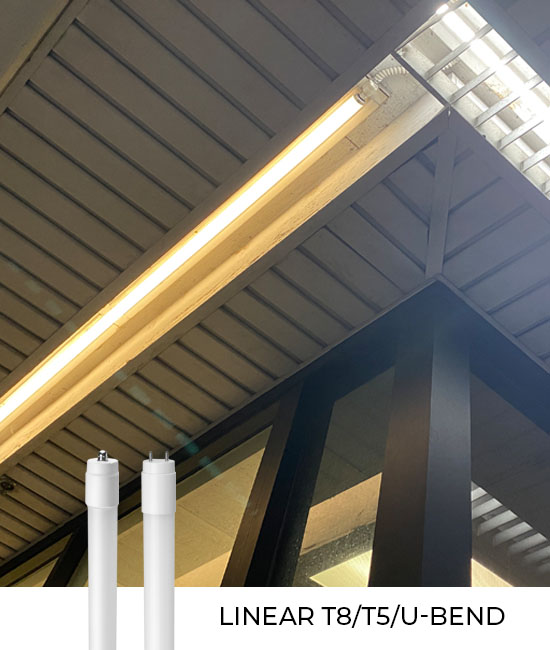Lighting plays a crucial role in a learning environment for students and staff. LED lighting is a very popular alternative when it comes to specifying lighting retrofit in school environments. Upgrading the lighting system not only reduces energy consumption and operating costs but also improves the overall look and provides better brightness and color quality.
When it comes to making decisions on upgrading the lighting systems in school environments, these are some of the LED lighting options to choose from.
1. Linear Tube LED (T-LEDs) replacement options:
*Type A (Ballast Compatible)
It is also commonly known as instant fit or plug & play replacement tubular LED bulb. The socket remains wired to an existing fluorescent ballast. No re-wiring is needed.
*Type B (Ballast Bypass)
The wiring to the existing fluorescent ballast needs to be terminated to directly connected to the line voltage. The tubular LED bulb has an internal driver that is designed to operate on the line voltage and bypass the fluorescent ballast.
*Type C (External Driver)
These T-LEDs have an external driver that operates on line-voltage. Electrical connections to the existing ballast are terminated. The external driver can drive multiple T-LEDs. These T-LEDs do not have an internal driver.
*UL type A+B (Ballast Bypass & Compatible)
These T-LEDs are fluorescent ballast bypass and/or compatible LED linear lamps. They are commonly used with or without ballast. The benefits of this type are for safety and versatility. It reduces installation issues and offers maximum flexibility in both technology and application. Although these T-LEDs are considered ballast compatible, not all ballast manufacturers are compatible. Please contact our customer service team for the list of compatible ballast prior to installation.
2. Retrofit Kits replacement:
It requires to remove the fluorescent lamps and other fixture components and replace them with an LED retrofit kit that fits into the existing housing.
3. New Luminaires replacement:
It requires replacing the entire fluorescent luminaires or HID fixtures, including the housing, with new LED luminaires.
4. Lighting Controls
Besides lighting upgrades to LED lighting, Lighting controls play crucial roles in reducing energy consumption and meeting local energy codes. Always review the energy codes from your local jurisdiction and reference a specific code year of ANSI, ASHRAE, and CA Title 24. Our NaturaLED lighting fixtures offer many options when it comes to dimming and controls.
Most building codes require some or all the following lighting control capabilities:
– Local or Manual Control: Each space may be required to have a local switch that can override other controls such as time-based schedules.
– Dimming: Dimming allows the occupants to reduce the light output, therefore, reduce the energy consumption. LED fixtures come with many different options/preferences to dim the light output.
– Time Scheduling: It is commonly used to manage the lighting throughout the school/university to turn on, off, or dim. Simple or highly programmable timeclock can be used to change the lighting to the hour or day of the week. Astronomical timeclocks can automatically adjust sunrise and sunset times based on location throughout the year.
– Occupancy Sensing: This type of sensor turns the lights on when it detects someone in the room or space. The most commonly used occupancy sensors are with Passive Infrared (PIR) or Ultrasonic (Microwave) sensors. PIR sensors sense the heat and temperature changes in the room and trigger to turn on the lights; on the other hand, Microwave sensors detect the occupant through sound waves to the movement.
– Daylight Responsive Control: For interior spaces, daylight-responsive dimming uses a photocell/sensor to dim or even turn off the lights when it detects available daylight. And for the exterior spaces, the photocell/sensor will turn the lights off at dawn and on at dusk.




